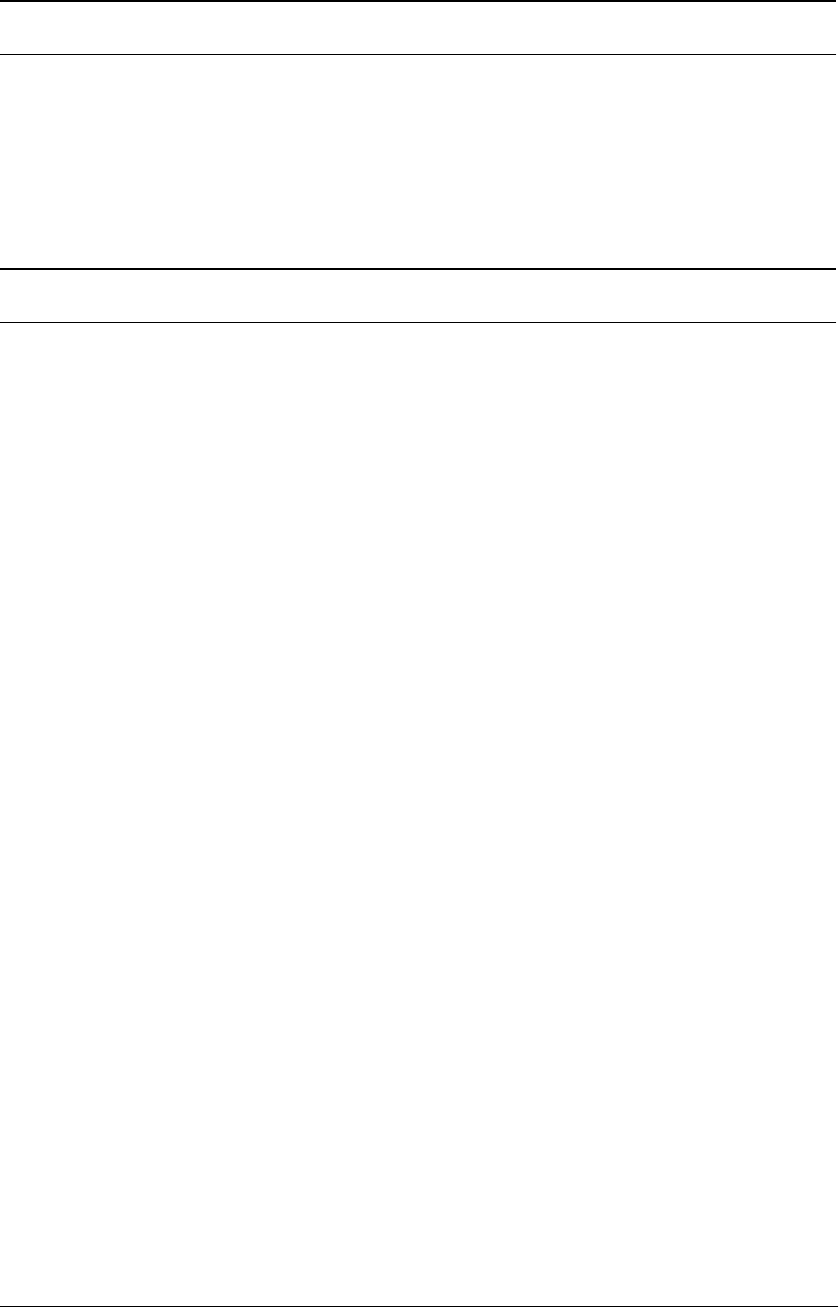
III PERIPHERAL BLOCK: SERIAL INTERFACE
S1C33210 FUNCTION PART EPSON B-III-8-41
ESERR0, ESRX0, ESTX0: Ch.0 interrupt enable (D0,D1,D2) / Serial I/F interrupt enable register (0x40276)
ESERR1, ESRX1, ESTX1: Ch.1 interrupt enable (D3,D4,D5) / Serial I/F interrupt enable register (0x40276)
Enable or disable interrupt generation to the CPU.
Write "1": Interrupt enabled
Write "0": Interrupt disabled
Read: Valid
The ESERRx, ESRXx, and ESTXx bits are interrupt enable bits corresponding to receive-error, receive-buffer full,
and transmit-buffer empty interrupt factors, respectively, in each channel. The interrupts for which this bit is set to
"1" are enabled, and the interrupts for which this bit is set to "0" are disabled.
At initial reset, all these bits are set to "0" (interrupts disabled).
FSERR0, FSRX0, FSTX0:
Ch.0 interrupt factor flags (D0,D1,D2) / Serial I/F interrupt factor flag register (0x40286)
FSERR1, FSRX1, FSTX1: Ch.1 interrupt factor flags (D3,D4,D5) / Serial I/F interrupt factor flag register (0x40286)
Indicate the status of serial-interface interrupt generation.
When read
Read "1": An interrupt factor occurred
Read "0": No interrupt factor occurred
When written using the reset-only method (default)
Write "1": Flag is reset
Write "0": Invalid
When written using the read/write method
Write "1": Flag is set
Write "0": Flag is reset
The FSERRx, FSRXx, and FSTXx flags are interrupt factor flags corresponding to receive-error, receive-buffer full,
and transmit-buffer empty interrupts, respectively, in each channel. The flag is set to "1" when each interrupt factor
occurs.
A transmit-buffer empty interrupt factor occurs when transmit data is transferred from the transmit data register to the
shift register.
A receive-buffer full interrupt factor occurs when receive data is transferred from the shift register to the receive data
register.
A receive-error interrupt factor occurs when a parity, framing, or overrun error is detected during reception of data.
At this time, if the following conditions are met, an interrupt to the CPU is generated:
1. The corresponding interrupt enable register bit is set to "1".
2. No other interrupt request of a higher priority has been generated.
3. The PSR's IE bit is set to "1" (interrupts enabled).
4. The set value of the corresponding interrupt priority register is higher than the CPU interrupt level (IL).
When using the receive-buffer full or transmit-buffer empty interrupt factor as an IDMA request, the fact that the
above conditions are met does not necessarily mean that an interrupt request to the CPU has been output
simultaneously when an interrupt factor occurs. An interrupt is generated under the above conditions upon
completion of the data transfer by IDMA, provided that interrupts are enabled by settings on the IDMA side.
The interrupt factor flag is set to "1" whenever an interrupt factor occurs, regardless of the settings of the interrupt-
enable and interrupt priority registers.
If the next interrupt is to be accepted following the occurrence of an interrupt, it is necessary that the interrupt factor
flag be reset, and that the PSR be set up again (by setting the IE bit to "1" after setting the IL to a value lower than the
level indicated by the interrupt priority register, or by executing the reti instruction).
The interrupt factor flag can only be reset by writing to it in the software. Note that if the PSR is set up again to
accept interrupts generated (or if the reti instruction is executed) without resetting the interrupt factor flag, the same
interrupt occurs again. Note also that the value to be written to reset the flag is "1" when the reset-only method
(RSTONLY = "1") is used, and "0" when the read/write method (RSTONLY = "0") is used.
At initial reset, all of these flags become indeterminate, so be sure to reset them in the software.


















